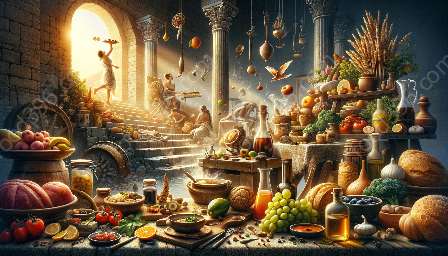In the realm of gastronomy, food is not merely a source of sustenance but also a form of art that appeals to the senses. One of the key aspects that make food an art form is its aesthetic appeal. The visual presentation of food plays a crucial role in enhancing the overall dining experience, and it is deeply intertwined with food culture and history.
The Evolution of Food Aesthetics
Food has always been a subject of aesthetic exploration, dating back to ancient civilizations where elaborate feasts were prepared with great attention to detail. The aesthetics of food were used to showcase wealth, power, and hospitality, as well as to establish cultural identity. Over time, food aesthetics have evolved in parallel with changes in societal values, artistic movements, and technological advancements.
Visual Appeal and Gastronomy
The visual presentation of food is an essential component of gastronomy. From the arrangement of ingredients on a plate to the use of color, texture, and symmetry, food aesthetics greatly influence the perception of taste and quality. Aesthetically pleasing food not only stimulates the appetite but also conveys a sense of craftsmanship and care in its preparation.
The Influence of Food Culture and History
Food aesthetics are heavily influenced by the culture and history of a region. Different cuisines have distinct visual styles that reflect the traditions, beliefs, and values of their respective communities. For example, the intricate and vibrant plating of Japanese kaiseki cuisine is a reflection of the country's reverence for nature and seasonality. Similarly, the elaborate decorations of Mexican cuisine pay homage to the rich tapestry of Mesoamerican culture.
The Symbolism of Food
Food aesthetics also encompass the symbolic meanings associated with culinary creations. Throughout history, certain foods and their visual representations have been imbued with cultural, religious, and social significance. For instance, the use of specific colors and ingredients in traditional Chinese cuisine is often tied to auspicious symbolism and rituals. In Western culinary traditions, the visual presentation of special occasion dishes, such as wedding cakes and holiday feasts, carries symbolic weight that transcends mere aesthetics.
The Art of Plating
The art of plating, or food presentation, is a fundamental aspect of food aesthetics. Chefs and culinary artists utilize various techniques to arrange food in visually appealing ways, often drawing inspiration from artistic movements, nature, or cultural motifs. The use of negative space, garnishes, and decorative elements contributes to the overall aesthetic impact of a dish, transforming it into a work of art that engages the eyes before the palate.
Modern Innovations in Food Aesthetics
With the advent of social media and the rise of food photography, there is a heightened emphasis on food aesthetics in contemporary culinary culture. Chefs and food enthusiasts use platforms like Instagram to showcase visually stunning dishes that not only tantalize taste buds but also captivate followers with their aesthetic allure. This trend has brought about a new era of experimentation and creativity in food presentation, blurring the lines between culinary artistry and visual art.
The Intersection of Taste and Beauty
Gastronomy, food culture, and history intertwine with food aesthetics to form a rich tapestry of sensory experiences and cultural narratives. The visual appeal of food serves as a bridge between tradition and innovation, allowing for the exploration of new dimensions in culinary expression. As food continues to captivate the imagination and delight the senses, its aesthetics will remain an integral part of the ever-evolving culinary landscape.

